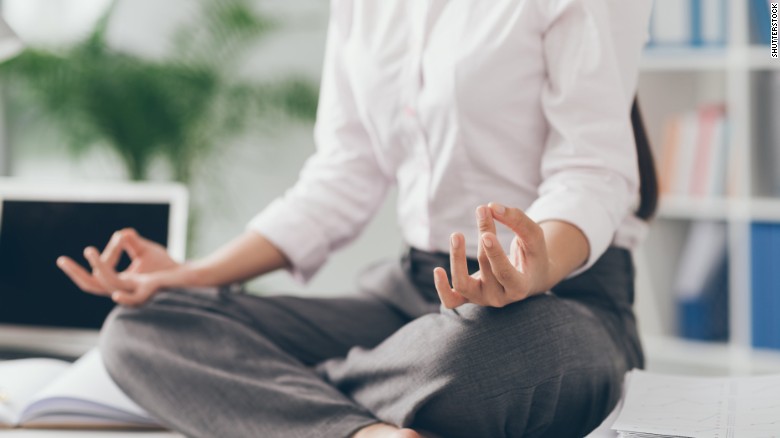JOURNAL.
Articles, Tips & Tools for an abundant life
Head & neck pain in the corporate professional
By Dr Fauntine Lariba (Osteopath)
Head and neck pain are common amongst corporate professionals due to the high stress and mostly sedentary nature of the work. Some simple considerations outlined below could prevent this pain from escalating into an injury that requires time, money and energy to manage.
DISCLAIMER: This list is by no means exhaustive and a consultation with an Osteopath for further screening and individualised management is still recommended.
Desk ergonomics
The setup of one’s desk is very important as countless hours are spent here. Ideally there would be variation in the work posture (sitting, walking, standing, lunging etc) but for a number of professionals this isn’t realistic.
Below are some universal desk ergonomic guidelines for the upper body to optimise one’s desk setup.
ACTION POINTS:
-The height of your monitor/s should be approximately eye height.
-The desk height should be approximately inline with the elbows.
-The keyboard should also be inline with the elbows.
-The keyboard should be within reach when your elbows are by your sides.
-Use a full length keyboard. A 13” laptop keyboard is significantly smaller than a full size keyboard and can lead to a compressed upper body posture.
-Depending on the amount of mousing required, an ergonomic mouse may be favourable. It will rest your hand and wrist in a neutral position.
-The mouse and/or trackpad should be within reach when your elbows are by your side.
More tips and considerations for working from home can be found in this article.

Common postures
It is acknowledged that we become what we repeatedly do and this is highly relevant when thinking about our day to day posture. What are some common postures that you assume? Perhaps you are always looking to your right to check your second monitor. Or perhaps you always answer the phone with your right hand.
ACTION POINT: Notice what postures or movements you frequently assume then seek to add in variety. Eg/ answering the phone with your left hand. This will help prevent repetitive strain injuries (RSI).
See this article for more information on RSI or repetitive strain injuries.
Jaw position
The anatomy and physiology of the jaw tells us that there is a close relationship between the jaw, head and neck. Muscle tension held in the jaw can manifest head and/or neck pain.
ACTION POINT: Are you clenching your teeth when you’re at the desk? See if you can maintain a small gap between the top and bottom row of teeth in the back of your mouth. Notice how this automatically relaxes the face. Also note that you can relax the jaw whilst having your mouth closed.
To learn more about jaw (TMJ) pain please see this article.
Hydration
It’s more than just drinking more water, although this can be a great place to start. Drinking caffeinated beverages has a diuretic effect upon the body (increased passing of urine), leading to further dehydration. This diuretic effect is also true for alcohol, drinking alcohol dehydrates us.
So which liquids are simple and effective for hydration? Rehydrating will be more effective if we do so with an isotonic solution. Without digging into the science, simply add something to your water so that your body retains it instead of letting it pass through. A slice of lemon or cucumber will suffice.
ACTION POINT: Have a DIY flavoured water bottle on the desk to prompt water consumption.
Vision
Do you wear glasses? Do you get tired, sore or foggy eyes? Spending prolonged periods starting at a computer can strain the eyes. Eye sight issues can be indicative of other problems and should be investigated by a professional.
ACTION POINT: If you haven’t done so recently, visit an Optometrist to check your vision. Also try alternating your focal distances, simply looking out the window at a far object then back to the screen and repeating this a few times can be helpful for the eyes.
Stress manifestation
Last but definitely not least is stress management. Stress can manifest in multiple ways, a common musculoskeletal stress manifestation is a tension headache and a sore neck.
How do you manage your occupational stress? Everyone needs an outlet and a safe place. This yin to your yang is important for general health and optimal performance.
ACTION POINTS: Have an activity and/or space that allows you to wind down and escape. And allow yourself this time to wind down, acknowledge that it is counterproductive to be charging forwards 24/7.

Final thoughts
Next time you’re sitting at your desk experiencing head or neck pain consider your desk ergonomics, common postures, jaw position, hydration, vision and stress management strategies.
Stay tuned for the lower body edition of this article..
Submit Form
email: hello@thealife.com.au
The A Life
We can't wait to hear from you
For further enquiries please get in touch with us via email or just fill out the form below.
ADD A COMMENT
September 7, 2020